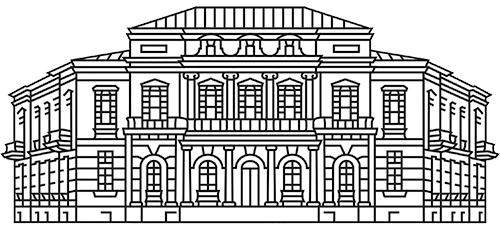Parchment collections
F1. 628 items: manuscripts from 1187–1868. In Latin, Ruthenian, Polish, Italian, French, Swedish, and German. Described in the inventory book printed in 1898–1906, the Manuscripts Department’s card catalogue and “Pergamentų katalogas” (Catalogue of Parchments) by Rimantas Jasas. The images of some of the parchments are available in the Digital Parchment Archive.
This parchment collection was put together in 1897–1905 by employees of the Manuscripts Department of the Vilnius Public Library.
It was received in 1946 from the V. I. Lenin State Library of the USSR (now the Russian State Library) in Moscow alongside other collections, which had been evacuated from Vilnius in 1915 by the Tsarist authorities.
F2. 75 items: manuscripts from 1503–1614. In Ruthenian. Described in the inventory book printed in 1898, the Manuscripts Department’s card catalogue and “Pergamentų katalogas” (Catalogue of Parchments) by Rimantas Jasas. The images of some of the parchments are available in the Digital Parchment Archive.
This parchment collection was put together in 1871 by Piotr Giltebrandt, the organizer of the Manuscripts Department of the Vilnius Public Library.
It was received in 1946 from the V. I. Lenin State Library of the USSR (now the Russian State Library) in Moscow alongside other collections, which had been evacuated from Vilnius in 1915 by the Tsarist authorities.
F3. 115 items: manuscripts from 1414–1795. In Latin, Ruthenian, and Polish. Described in the inventory book printed in 1897, the Manuscripts Department’s card catalogue and “Pergamentų katalogas” (Catalogue of Parchments) by Rimantas Jasas. The images of some of the parchments are available in the Digital Parchment Archive.
This parchment collection was put together, most probably, in 1879 by employees of the Manuscripts Department of the Vilnius Public Library from the former holdings of the Vilnius Chapter.
It was received in 1946 from the V. I. Lenin State Library of the USSR (now the Russian State Library) in Moscow alongside other collections, which had been evacuated from Vilnius in 1915 by the Tsarist authorities.
F4. 60 items: manuscripts from 1505–1713. In Latin, Ruthenian, Polish, Italian, and German. Described in the Manuscripts Department’s card catalogue and “Pergamentų katalogas” (Catalogue of Parchments) by Rimantas Jasas. The images of some of the parchments are available in the Digital Parchment Archive.
The compilers of the collections are Tadeusz Wróblewski (from 1891) and employees of the Manuscripts Department of the Central Library of the Academy of Sciences of the Lithuanian SSR (until 1947).
The collection was received in 1940 from the then State Wroblewski Library (the present-day Wroblewski Library of the Lithuanian Academy of Sciences).
F5. 82 items: manuscripts from 1448–1779. In Latin, Ruthenian, Polish, Russian, and German. Described in the Manuscripts Department’s card catalogue and “Pergamentų katalogas” (Catalogue of Parchments) by Rimantas Jasas. The images of some of the parchments are available in the Digital Parchment Archive.
This parchment collection was put together in 1949–1959 at the Manuscripts Department of the Central Library of the Academy of Sciences of the Lithuanian SSR from the former holdings of library of the Vilnius Evangelical Reformed Synod (16th century – 1944), remnants of the collections of the the Šiauliai Aušra Museum (1921–1950), parchments donated by Academician Konstantinas Jablonskis, and various individual parchments.
F6. 440 items: manuscripts from 1387–1922 (originals and transcripts). In Latin, Ruthenian, Polish, and Russian. Described in the Manuscripts Department’s card catalogue and “Pergamentų katalogas” (Catalogue of Parchments) by Rimantas Jasas. The images of some of the parchments are available in the Digital Parchment Archive.
This parchment collection was put together in 1957, while reorganizing the former archive of the Vilnius Chapter.
The archive was acquired in 1956 from the City of Vilnius Restoration Workshop at the time of repair works on the Vilnius Cathedral.
